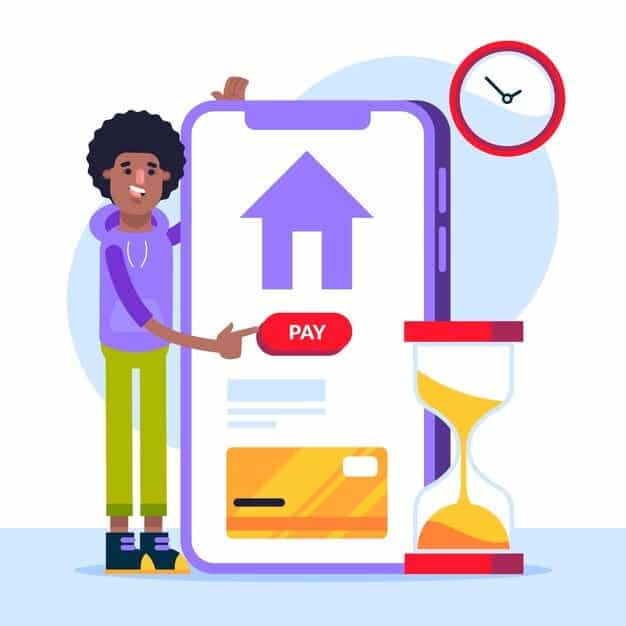Step-by-Step Guide to Creating a Financial Safety Net

The unexpected is an inevitable part of life. From a sudden job loss or a major car repair to an unforeseen medical expense, these events can derail even the most carefully laid financial plans. Without a robust financial safety net, these "what-ifs" can quickly spiral into long-term debt and immense stress.
A financial safety net is more than just a savings account; it is a multi-layered shield designed to provide security, liquidity, and peace of mind during turbulent times. Building one is not an overnight task, but a strategic, step-by-step process that solidifies your financial foundation for years to come.
This detailed guide will walk you through the essential stages of constructing a comprehensive financial safety net, making the goal achievable for everyone, regardless of your current income or savings level.
Phase 1: Establish Your Foundation (The Emergency Fund)
The emergency fund is the bedrock of your financial safety net. It is a dedicated, easily accessible stash of cash explicitly reserved for genuine financial emergencies.
Step 1: Calculate Your Essential Monthly Expenses
Before you start saving, you need a clear target. Your emergency fund goal is based on your essential monthly living expenses, not your entire current spending budget.
- Audit Your Spending: Go through your bank statements for the last three months. Categorize every expense.
- Identify the Non-Negotiables: Pinpoint the costs you must pay to survive:
- Housing (Rent/Mortgage)
- Utilities (Water, Electricity, Basic Internet/Phone)
- Food (Groceries, not dining out)
- Transportation (Gas, basic public transit, or minimum car payment)
- Minimum Debt Payments
- Insurance Premiums (Health, Auto, Home)
Sum these essential expenses to determine your "bare-bones" monthly cost.
Step 2: Set Your Target Goal
Financial experts generally recommend saving the equivalent of three to six months of your bare-bones expenses. The right number for you depends on your personal circumstances:
- 3 Months: Suitable if you have a very stable job, low debt, and a second income source in your household.
- 6 Months: The standard, recommended target for most people.
- 9-12 Months: Ideal if you have an unpredictable income (self-employed), high dependents, or work in an industry with frequent layoffs.
Pro-Tip for Beginners: Don't let the big number overwhelm you. Start by aiming for a Starter Fund of $500 to $1,000. This smaller cushion can handle minor emergencies (a flat tire, a minor medical co-pay) and builds critical saving momentum.
Step 3: Implement the "Pay Yourself First" Principle
Consistency is paramount. Treat your emergency fund contribution like a fixed monthly bill.
- Automate Savings: Set up an automatic transfer from your checking account to your dedicated savings account to occur immediately after your paycheck is deposited. This ensures you save before you have a chance to spend.
- Save Your Windfalls: Direct any unexpected money—tax refunds, work bonuses, or monetary gifts—straight into your emergency fund to accelerate your progress.
- Cut the Fat: Review your budget again for non-essential expenses (subscriptions, frequent dining out, impulse purchases). Reallocate the money saved from these cuts directly to your fund.
Step 4: Choose the Right Account
Where you keep your emergency fund is almost as important as the amount. It must be Safe (FDIC-insured) and Liquid (easily accessible).
- High-Yield Savings Account (HYSA): This is the ideal vehicle. It is separate from your daily checking account, reducing the temptation to spend, and offers a higher interest rate than a traditional savings account, allowing your money to grow modestly and safely.
- Avoid Risk: Do not keep your emergency fund in the stock market or any investment vehicle. The principal must be protected from market volatility.
Phase 2: Fortify Your Defenses (Risk Management)
Once your cash reserves are growing, the next layer of your safety net involves protecting yourself from catastrophic financial loss.
Step 5: Master High-Interest Debt
High-interest debt, like credit card balances or high-rate personal loans, is a constant threat to your stability. In an emergency, it can quickly multiply and wipe out your savings.
- Prioritize Repayment: While saving your Starter Fund, begin paying down any debt with an interest rate over 10%.
- Debt Avalanche vs. Snowball: Use the Debt Avalanche method (paying off the highest interest rate first) to minimize the total interest paid, or the Debt Snowball method (paying off the smallest balance first) for psychological wins.
- A Key Balance: Once you reach your full 3-6 month emergency fund target, you can focus even more aggressively on debt repayment before moving on to investment goals.
Step 6: Secure Comprehensive Insurance Coverage
Insurance is the ultimate financial protection, preventing a crisis from bankrupting you.
- Health Insurance: A major illness is one of the leading causes of personal bankruptcy. Ensure your health plan is adequate for your needs and risk profile.
- Auto and Home/Renter's Insurance: These protect your assets and shield you from liability in the event of an accident or disaster.
- Disability Insurance: This is often overlooked but critical. It replaces a portion of your income if you become unable to work due to injury or illness. If your income stops, your safety net will quickly vanish.
- Tip: Check if your employer offers short-term or long-term disability coverage.
- Life Insurance: If you have dependents (children, spouse, elderly parents) who rely on your income, a term life insurance policy is essential to protect their financial future should the unthinkable happen.
Phase 3: The Long-Term Shield (Building Wealth)
A true financial safety net also includes long-term planning and wealth-building that provide additional security and flexibility.
Step 7: Build and Maintain Good Credit
Your credit score is your access card to affordable financing during non-emergency situations (like buying a home or car). A high score can also act as a safety net by providing access to credit with favorable terms should you need a bridge loan for a planned expense.
- Pay Bills on Time: This is the single most important factor.
- Keep Utilization Low: Aim to use less than 30% of your available credit limit.
- Review Regularly: Check your credit report annually for errors.
Step 8: Maximize Retirement Savings
While retirement funds are not meant to be a safety net (withdrawing early incurs penalties and taxes), they represent future financial stability. The stronger your retirement savings, the less financial stress you will experience later in life.
- Employer Match: At a minimum, contribute enough to your 401(k) or equivalent plan to get the full employer match—this is essentially free money and an immediate, risk-free return on investment.
- Roth vs. Traditional: Understand the tax advantages of your various retirement accounts (e.g., IRA, Roth IRA).
Step 9: Create a Secondary Income Plan (The Ultimate Back-Up)
For the most robust safety net, consider how you could generate income quickly if your primary job disappeared. This doesn't mean starting a new full-time business, but having a contingency plan.
- Develop a "Side Hustle" Skill: Could you offer consulting in your field, do freelance writing, or provide a specific service?
- Network: Maintaining a strong professional network is the best insurance against job loss. These connections are your first resource for finding new employment quickly.
Conclusion: Peace of Mind is Priceless
Building a financial safety net is not about restricting your life; it is about freeing it. It allows you to take calculated risks, pursue opportunities, and weather life's inevitable storms without the fear of financial ruin. By consistently following these nine steps—establishing your cash reserves, fortifying your protection through insurance and debt management, and building long-term security—you move from a state of vulnerability to one of genuine financial confidence. Start small, stay consistent, and secure the peace of mind that comes with knowing you are prepared for whatever tomorrow may bring.

Related